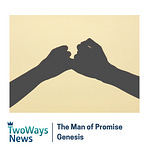Perhaps predictably, last week’s post about ‘ministry in the year of covid19’ generated quite a bit of interest. This week’s edition is a follow-up about the power and possibilities of ‘one-another ministry’ in these difficult times, with one practical suggestion to think about next.
In my part of the world, the churchly response to covid19 has been swift, responsible and admirable. Many Sunday gatherings have been cancelled, with church staff moving quickly to put together online versions. In many places, small groups have also been put on ice, although churches are making different decisions about that. I suspect that it won’t be long before most small groups in most churches have ceased to function. Again, the suggestion is that we move our small groups online as best we can.
No doubt virtual church gatherings and virtual small groups will help—and no doubt we will learn to make the most of them over time. But the reason that many of us are worried about the spiritual consequences of these (right and responsible) decisions is that virtual church and virtual small groups are virtual in one sense, but not the other.
The word ‘virtual’ has two main meanings:
‘pretty much the same’ — as in ‘I was virtually exhausted’ or ‘I was virtually dependent on her for everything’;
‘the simulation or extension of something through software’ — as in a ‘virtual disk’ or ‘virtual meeting’.
The problem is that virtual church is not virtually church, and ditto for small groups. I think we all believe this—or we would have gone online years ago. (It would certainly be cheaper, easier and more efficient!)
But apart from theological issues, when we try to express what exactly is missing in a virtual church or small group, it can be hard to put into words. We might still share the word together and pray together; even sing (awkwardly) together. But there is a power in physical presence and physical gathering that we can’t replace—of experiencing other people as embodied persons (for that is what we are); of seeing them, and listening to them, and speaking face to face; of being one of multiple voices raised together in confession or prayer or song. Of being together.
It’s the kind of thing Paul means as he prays “most earnestly night and day that we may see you face to face and supply what is lacking in your faith” (1 Thess 3:10). It’s what John is referring to in that lovely little verse that I’m thinking of adding to my email signature: “Though I have much to write to you, I would rather not use paper and ink. Instead I hope to come to you and talk face to face, so that our joy may be complete” (3 Jn 14).
There’s an encouraging, exhortatory, joyful power in personal presence that a letter or podcast or virtual meeting can’t replace. And this is why we are understandably concerned about the spiritual effects of prolonged periods without it—where we are not meeting together, face to face, for what could be six months, or even longer.
In last week’s Payneful Truth I talked about the importance of ‘one-another ministry’ in this context, and how the lack of one-another culture in our churches can often be exposed at times like this.
But (speaking more positively) can anything be done about that? What could we do to promote and build a ‘one-anothering’ culture in the new disconcerting reality of covid19?
With some caution, I’d like to offer a simple practical suggestion. I’m cautious to do so, because things are still changing pretty rapidly (as I write), and something that is confidently asserted today will very possibly be outdated tomorrow, if not next week. I’m also cautious because we’re all still getting our bearings, and calibrating what loving, reasonable, responsible behaviour looks like in this new landscape. And I’m cautious because I know that different Christians and churches face different distinct challenges, and will quite rightly come to different conclusions about how to act.
But with those caveats in place, I’d like to open a conversation about the benefits of face-to-face groups of three people. You might call them trios or triads or troikas or even triumvirates—for convenience, I’ll call them ‘Bible triplets’.
What might it look like, and what would be the advantages, if we encouraged and helped people in our congregations to gather in regular, face-to-face Bible triplets?
Here are some initial thoughts.
If it was the same three people meeting regularly, and appropriate precautions were enforced (hand-washing, 1.5m distancing, staying away when sick, and so on) the risk of viral transmission would be very low—certainly below any current advice from the health authorities about the kinds of gatherings that can responsibly continue. (As of this morning—March 23—the official advice here in Australia is that while religious services should not take place, small groups can continue to meet with appropriate care. This may change, of course, but that is no reason not to be begin this conversation, and to do some planning.)
A cluster of three in this context has a number of advantages. It is significantly safer virus-wise than a group of ten, but is more robust and stable than a one-to-one. It is also less relationally intense than a one-to-one, especially for those who are not used to meeting this way, and yet it provides a nice level of interpersonal interaction.
Triplets like these could be formed out of existing small groups. This is not only organisationally sensible, but provides a level of pastoral control or oversight. Pastors could work with small group leaders to put together triplets that each contained at least one mature Christian—to hold it together, to prevent it going ‘toxic’ (it can happen) and to report back to the small group leader if there are particular issues to address. Triplets could work well in conjunction with regular online growth groups—perhaps triplets could meet weekly for an hour, and the whole group catchup and pray together once a fortnight.
The basic function of Bible triplets would be to keep people connected with God and each other, around his word. Multiple possibilities exist for helping and resourcing people to do this:
They could read the Bible together and then pray, using the Swedish method or the COMA approach (my preference), or something similar. Here’s a link to a nice little Tim Challies piece, explaining the ‘Swedish method’ of Bible study. You can find the COMA method outlined in David Helm’s book, One-to-One Bible Reading, with a summary of the Swedish method as well (see details below).
Triplets could utilise purpose-written material put together by the church staff as the basis of their discussion (perhaps connected to the sermon series, perhaps in video form).
They could avail themselves of the cornucopia of Bible study resources from my favourite publisher, Matthias Media. For this context, the Daily Reading Bible series and the Pathway Bible Guide series would be particularly suitable.
They could read together David Helm’s excellent little book, One-to-One Bible Reading, which not only explains the benefits of interpersonal Bible reading, but provides simple, helpful guidelines for getting started (including a good section on how to utilise the COMA method).
With many churches now broadcasting or livestreaming their Sunday services, triplets could be a very helpful way to improve the effectiveness of these times. Perhaps rather than ‘church’ and ‘small groups’ being different structures in the week, we might end up with one meeting time in the week—where the pastor broadcasts some teaching and encouragement, and where triplets listen together, read and interact over the passages together, and respond in prayer together.
There are many creative possibilities, including various combinations of the above.
I’m under no illusion that this ‘Bible triplet’ idea is the solution to all our problems.
For one thing, there will be some church members (and leaders) who conscientiously think differently about the wisdom of conducting even this minimal level of face-to-face meeting. We need to allow each other the freedom to make different decisions, as churches and as individuals within our churches. If we were to start using these small clusters in some way, even allowing time to think and talk it through carefully, there would doubtless be congregation members who felt uncomfortable to participate.
All the same, in the understandable scramble to take all our gatherings and activities online, I’m keen that we not overlook the power and importance of actually meeting regularly together in the name of Jesus—even in a number as small as two or three.
I’d love your thoughts on this one. Do you think Bible triplets are a good idea in this current climate? How would it potentially work where you are? Would it be better to link two couples or households together, rather than three individuals? Do you have any further ideas or resources to help it work? Or does it spark off other quite different ideas for mutual edification and encouragement in the era of covid19?
Send me an email, or contribute to make a comment below.
Thanks to everyone who has signed up—and if you haven’t already subscribed, please do so. It’s the only reliable way to keep getting The Payneful Truth.
PS. This week’s random image is one of my favourite family snaps (from about 20 years ago)—a triplet of my kids fishing at sunset.











